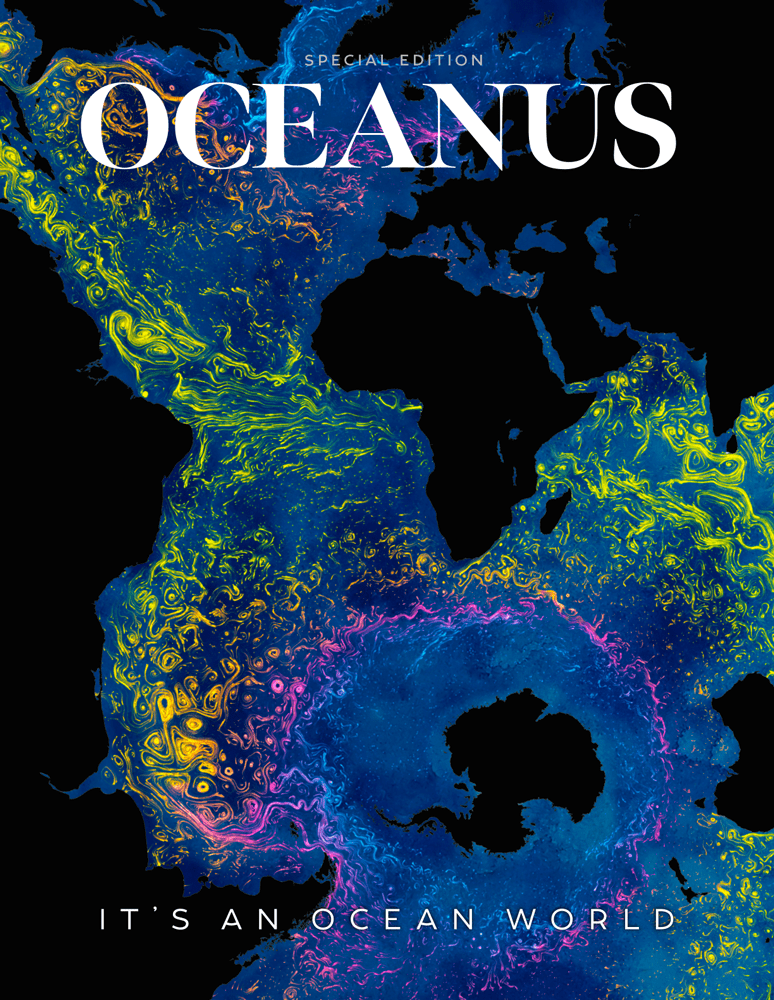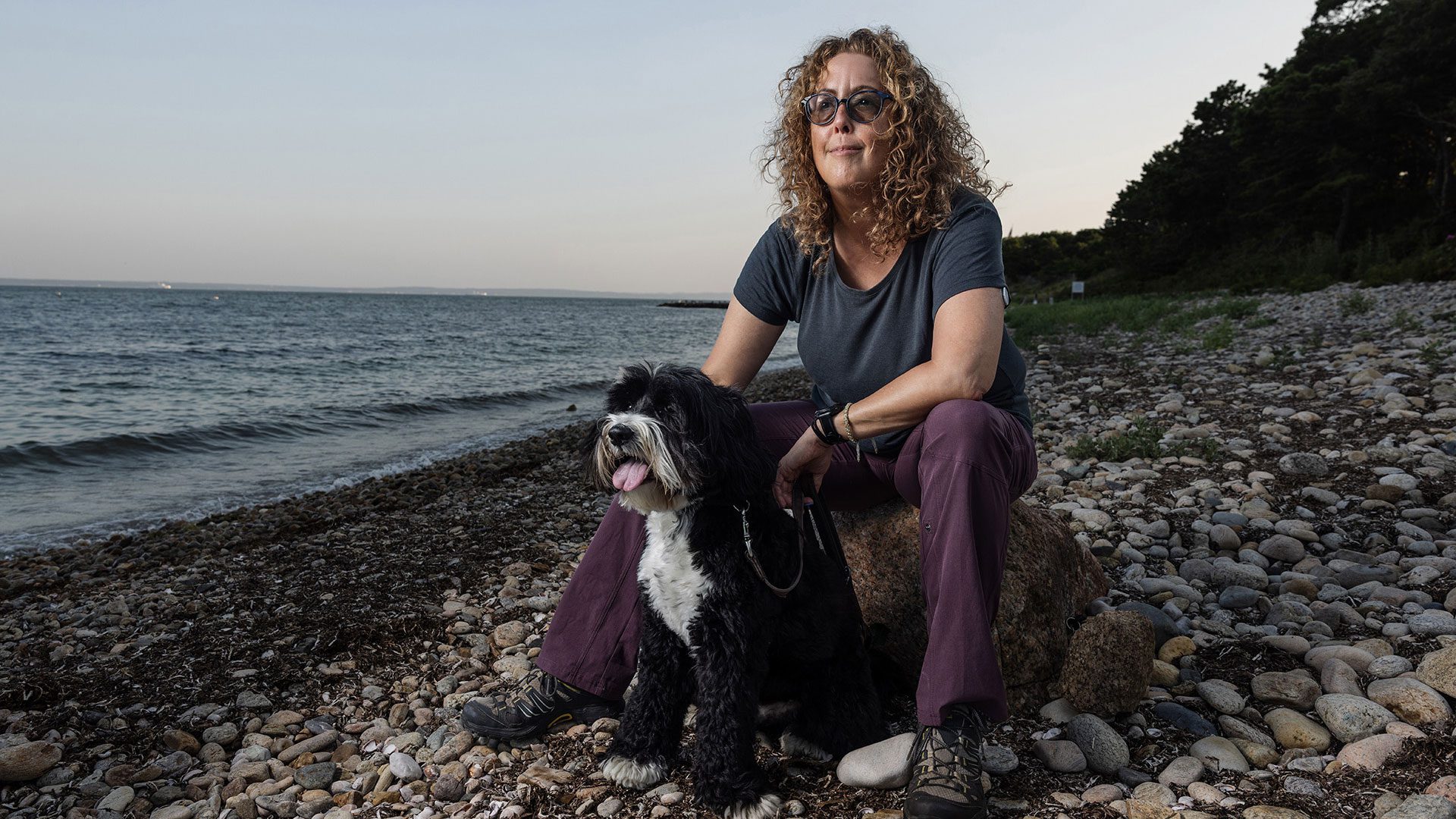Why ocean science?
Roboticist Gwyneth Packard on the need for ocean exploration
By Gwyneth Packard | August 4, 2025
I stand at the water’s edge nearly every day. It is a privilege not granted to many. More than 60% of humanity lives over 62 miles (100 kilometers) from the shore, the edge between land and sea. That means that observing the ocean from the shore – the tides and waves, the smell of salt and the smell of low tide, the smooth sands and the beach cobbles – is distant and remote for many.
I think about that as I toss my expensive electronics into the vast body of water that covers more than 70% of our planet. I deploy robots because without them the ocean depths are as remote to scientists as tide pools were to baby-me growing up in the middle of Pennsylvania dairy country.
We all stand at an edge: a boundary that separates us from “What’s over there?” Some of us stand on the deck of a boat wearing boots; others stand on the deck of their home wearing slippers. But we all watch the rain come in, or watch a dry sky wondering when the rain will return.
My job is to help pursue answers. I am part of a larger team of engineers who deploy robots to go places human bodies can’t survive, to get data scientists need in order to understand the ocean system. Without technology, the time a human body can survive underwater is measured in minutes. Even with SCUBA gear, humans can dive only about 1,090 feet (332 meters), while the deepest ocean trench drops over 36,000 feet (10,972 meters). Our bodies simply aren’t built for planetary depths.
Scientists have so many questions about how the ocean works – this complex system of underwater rivers, waterfalls, surface waves, and internal waves; inhabited by single-cell organisms, gelatinous blobs, and behemoths; in a swirling chemical mystery of mixing, marking, and conveying. The ocean is majestic, and it takes my breath away, not just when it’s too cold, but also when I witness telephone poles tossed like grass in the surf after a hurricane, or when I stare into the eye of a humpback whale who is staring back at me.
To spend significant time exploring the ~35,000 feet (10,584 meters) of the ocean that we cannot swim through, we need our robots to see for us and bring back data, signals, images, and stories. For more than 60% of us, to spend significant time exploring even the surface of the ocean, we need our scientists to see for us and bring back analyzed data, processed signals, mosaicked images, and stories.
From the times we developed hunting and gathering and tracked the rhythms of our prey and harvest; to the times we began to settle and build and track the security of our settlements; to our time now where we track rain, winds, tides, storms, and the shifting seasons; humans have been inextricably linked to our environment.
I’ve felt that link in my own body, seasonal systems pressing against cellular systems. For years I would joke that I “hibernate” in the winter, but the truth is, I’ve struggled to be present and productive during those months. Asking questions and understanding the relationship between the systems of my body and of the seasons unlocked the impact of darkness and brought both literal and emotional light into my life. Similarly, my work asks questions to understand our relationship with the ocean.
To shed literal light on the seafloor, we have deployed our shiny, yellow tube-shaped robots equipped with strobes to image scallop beds critical to fisheries worth nearly half a billion dollars annually; illuminate historic shipwreck sites that expand our connection to heritage; and retrieve data from other sites of scientific, ecological, or commercial interest that deepen our insights and inform our decisions.
Phoenix, a REMUS-class AUV developed by the Oceanographic Systems Lab (OSL), undergoes testing in Johns Pond. (Video by Daniel Cojanu, © Woods Hole Oceanographic Institution)
We’ve sent our robots to trace the deep structure of Gulf Stream eddies – whorls visible at the surface from satellite, but mysterious at depth. Wavelengths that carry Wi-Fi, cell service, and GPS only penetrate the top few millimeters of the sea surface, which is another challenge facing our robots and us as their designers. Without those signals, robots contend with limited communication and uncertain positioning as currents carry them. Overcoming these limitations is part of our work.
All of these features are linked to the atmosphere and interact at the air-sea interface – the surface. These interactions shape the oxygen we breathe, the storms we endure, the food we rely on, and the rhythms we live by. To reach where humans can’t go and ships can’t stay, we’re developing a system that carries itself to sea.
Robots can provide us with the information we need to untangle these complex planet-scale systems that buffet and protect us. We have so much left to explore.
Stand at the edge you have access to, send us beyond with your questions, and follow along as the stories unfold.

